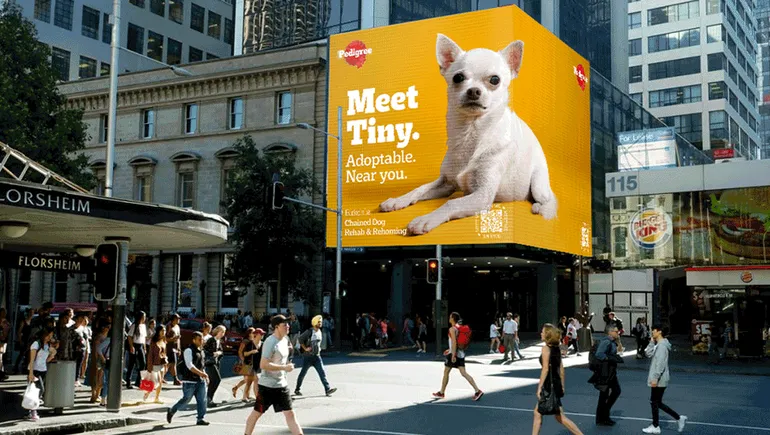
The winners and losers of Black Friday 2019
Retailers went into the Black Friday kickoff on edge, in some cases rattled by spending slowdowns in the third quarter. Many, like Macy’s and Kohl’s, were dropping prices well before the Thanksgiving turkey came out of the oven, in hopes of grabbing early sales in a year when there are six fewer days between that holiday and Christmas.
Adobe Analytics estimates that the sales for the full weekend (Thanksgiving through Cyber Monday) will top $29 billion, or 20% of total revenue for the full holiday season, up from 19% last year.
Retailers’ worries are hardly over, but shoppers over the weekend did pony up. By the end of Black Friday, retailers had rung up a record $7.4 billion in online sales alone, just shy of the record $7.9 billion during last year’s Cyber Monday event, according to Adobe Analytics data emailed to Retail Dive.
It’s a marked shift, seen especially on mobile, that underscores how retailers have finally caught up to consumers when it comes to seeing no daylight between online and offline channels. “This is the year that will go down in the history books as the tipping point between digital and real world,” Jon Reily, head of global commerce strategy at Publicis Sapient, told Retail Dive in an interview. “We knew it was coming and 2019 is the year.”
Not everyone took full advantage of the opportunity afforded by a long weekend when most Americans — except workers like those in retail — have a lot of time on their hands and long lists of things to buy in time for their next holiday.
Winner: Mobile
Thanks to social media shoppability and retail apps, consumers did more Black Friday spending on their phones than ever before, and that started in force on Thanksgiving, when the proportion of U.S. digital sales grew 17% to $4.1 billion, according to Salesforce.
Mobile orders increased 35% on Black Friday this year, with 65% of all e-commerce flowing through a mobile device, Salesforce also found. Of the more than $900 million total sales made by Shopify merchants, 69% of purchases were made on mobile, with the remaining 31% on desktop.
Adobe called Black Friday “the biggest day ever for mobile,” tracking $2.9 billion in sales from smartphones alone, or 39% of all e-commerce sales, a 21% increase from last year. The percentage of online traffic from smartphones rose 15.8% from last year to 61%, Adobe also found. Unsurprisingly, e-commerce giants (those with more than a billion dollars in annual revenue) outperformed their smaller counterparts (those with less than $50 million) with smartphone revenue share that was 11% higher and 66% more efficient at converting mobile visits into sales.
The trend continued through Saturday, when smartphones drove 41.2% of all e-commerce revenue, 22.2% more than last year. That’s “slightly higher” than the 35.9% that has been more typical of this year, Adobe said.
“Black Friday broke mobile shopping records with $2.9 billion spent through smartphones alone,” Taylor Schreiner, principal analyst and head of Adobe Digital Insights, said in a statement, noting that the imminent arrival of Christmas in this shortened season makes jumping on the phone preferable to standing in line. “Even when shoppers went to stores, they were now buying nearly 41% more online before going to the store to pick up.”
Loser: Stores without holiday spirit
Store traffic fell over this past weekend compared to last year, although the brick-and-mortar picture was mixed.
Shopper visits to stores declined by 3% year over year, ShopperTrak found. Thanksgiving Day was actually busier than last year, rising 2.3%, but Black Friday store visits decreased 6.2%. The pattern revealed by ShopperTrak’s analysis belies the notion that all that many consumers are shopping earlier, finding “a small shift of in-store traffic away from the beginning of the week and into both Thanksgiving and Black Friday, dispelling the idea that in-store traffic is moving away from the holiday and farther into November.”
Store analytics firm RetailNext, in a report covering “tens of thousands of stores across hundreds of brands,” similarly found Black Friday brick-and-mortar traffic down 2.1%, sales down 1.6% and average transaction value down 6.7%. However, conversion rate was up 1.7% and shopper yield up 2.7%, according to RetailNext. The traffic slowdown wasn’t as pronounced as years past, and intent to buy was clearly up, according to that report.
Coresight Research, in a report of visits over the weekend to 65 stores of 32 U.S. retailers in New York, New Jersey, Hawaii and Illinois, at outlets, luxury malls, downtown locations, neighborhood centers and regional malls, painted a mixed picture of efforts to cheer up stores, offer helpful customer service and keep lines moving.
Shopping small. 10% of consumers say they plan to shop more “small”/locally-owned retailers. #NPDHoliday #SmallBusinessSaturday #shopsmall https://t.co/Ze8xYKdoHr
— NPD Retail (@npdretail) November 30, 2019
Stores failing to wow those who do venture out for in-real-life shopping are missing an opportunity, according to Publicis Sapient’s Reily. “The holidays are still a very social time,” he said. “People seek out experiences, they want the winter wonderlands, and you can’t get that online. That’s still part of the culture, that portion of it is still healthy. The question is still whether people buy when they’re in there, or not. That’s where deals come in.”
Holiday cheer, and the merchandise that is differentiated from the electronics (PlayStation, Nintendo and Apple were the “most talked about brands,” according to Salesforce), kitchen gadgets, big-name sneakers and must-have toys that dominate big-retailer marketing this year can be particularly important to smaller retailers. They have an advantage, if a niche, among consumers who want to buy local, according to The NPD Group, which found that 10% more U.S. shoppers intend to do so.
“Small Business Saturday will accelerate sales for those retailers who can offer unique products or services that the retail giants can’t provide,” Adobe’s Shreiner said, adding that mobile is also an opportunity for them “to extend the support they see from consumers buying locally in-store on Small Business Saturday to the rest of the holiday season.”
Winner: Stores with pickup services
A quirk of mobile shoppers is that they seem to have an eye on physical stores, and many of them end up buying there, too.
One out of every five online purchases will be picked up in the store, according to The NPD Group’s Holiday Purchase Intentions Survey. That’s good news for retailers that have rapidly scaled their in-store pickup options for online purchases, because many of those customers buy even more when they get there, according to NPD chief industry advisor Marshal Cohen.
“The consumer’s adoption of mobile shopping can lead them to the store, where most impulse spending takes place,” Cohen said in emailed comments. “This further demonstrates the importance of a seamless retail approach in keeping up with today’s retail environment, especially during the competitive holiday shopping season.”
Loser: Retail margins
Discounts tied to the holiday began well before Thanksgiving this year, likely a reflection of the late start to the season and the spending pullback seen at some retailers during the third quarter. Despite that, Black Friday was still a day when consumers came looking for “even better offers,” according to Adobe. Average order value on Black Friday rose 5.9% year over year to $168, a new record, in part because shoppers have become more comfortable buying bigger ticket items online, Adobe said.
Of the 32 retailers visited by Coresight this past weekend, 25 offered promotions, with discounts averaging 37% to 47%. “Shoppers seemed motivated by Black Friday deals this year,” Coresight researchers said in their report. “Home and consumer electronics products were strong, indicating that consumers continue to invest in their homes. Accessories and clothing were top sellers too.”
That’s likely a reflection, at least in part, of a U.S. consumer finding it difficult to remain in or enter an increasingly shrinking middle class, while contending with rising debt from student loans and medical costs. But it’s also a sign of just how competitive retail is at the moment, with specialty retailers particularly struggling to get customers in, according to Mike Sansone, principal in the consumer and retail practice of strategy and management consulting firm A.T. Kearney.
Along with BOPIS services that bring customers (and their impulse buys) through the door, a wide array of merchandise helps provide a cushion for mass merchants like Target or Walmart. Specialty retailers like Michael Kors, (where discounts reached as high as 70% off compared to 60% last year, according to research from Telsey Advisory Group), meanwhile, generally don’t have such margin protections, Sansone told Retail Dive in an interview.
“My sense is that the winners continue to be those retailers that can offer a broad assortment, but also the combination of online and brick and mortar,” he said. “Some of these retailers are realizing that they have to leverage promotions to drive traffic. I will be curious to see whether that additional 10% is enough to drive you to the store.”
Small Business Saturday posted its own record $3.6 billion, with “strong gains from both large and small retailers, alike,” according to Adobe. Cyber Monday is poised set a new record of $9.4 billion in sales, 18.9% above last year, and to be the biggest day for smaller merchants, Adobe also said.
“The weekend between Black Friday & Cyber Monday is emerging as a truly lucrative period for online commerce,” Adobe Lead Analyst Vivek Pandya said in emailed comments. “With a projected $7.6 Billion generated over Small Business Saturday & Super Sunday, consumers are taking advantage of post-Black Friday deals and are accelerating spend in the run-up to Cyber Monday.”
But in all, the Thanksgiving-Black Friday weekend was perhaps not as good as it could be, if not as bad as feared. In fact, it was pretty much “In line with estimates,” according to Forrester Research analyst Sucharita Kodali, who noted that tariffs seem to have no impact.
“Nothing extraordinary,” she told Retail Dive in an email, citing Adobe’s numbers.





